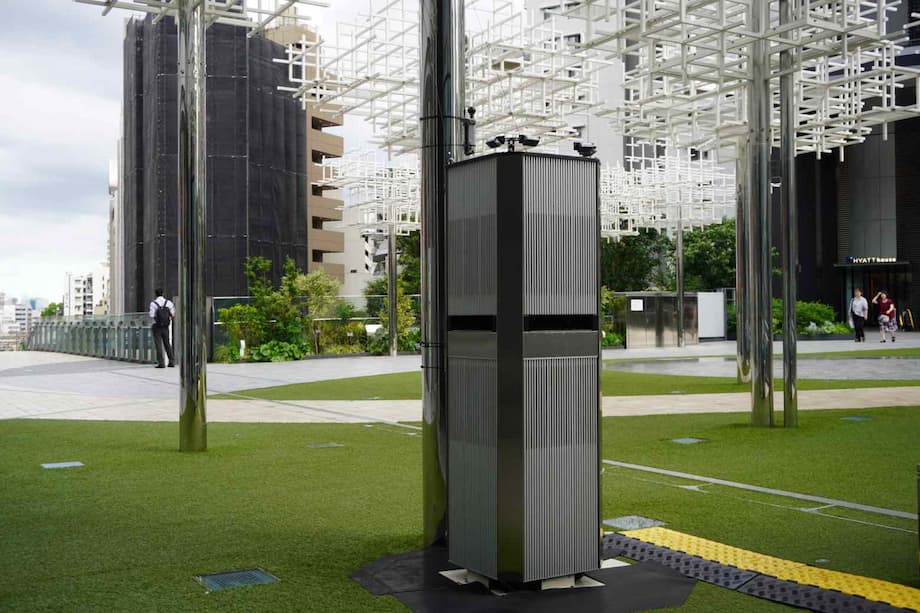Japan’s Outdoor Cooling Revolution: Air Conditioner Makers Step Outside
As Japan faces record-breaking summer temperatures, the country’s leading air conditioner manufacturers are taking bold steps to bring cooling comfort beyond the walls of homes and offices. With heatwaves intensifying and urban heat islands making city life increasingly uncomfortable, companies like Daikin Industries and Panasonic are pioneering outdoor air conditioning solutions, field-testing new technologies, and reimagining how people can stay cool in parks, public spaces, and even bustling city streets.
- Japan’s Outdoor Cooling Revolution: Air Conditioner Makers Step Outside
- Why Is Outdoor Cooling Needed in Japan?
- Japanese Manufacturers Lead Outdoor Cooling Field Tests
- How Do Outdoor Cooling Systems Work?
- Field Test Results: What Works and What Doesn’t?
- Broader Implications: Urban Design, Public Health, and Sustainability
- Challenges and Future Directions
- In Summary
This shift marks a significant evolution in Japan’s approach to heat management, blending advanced engineering, environmental awareness, and a keen understanding of public health needs. The move is not only a response to immediate climate challenges but also a glimpse into the future of urban living in a warming world.
Why Is Outdoor Cooling Needed in Japan?
Japan’s summers have always been hot and humid, but recent years have seen unprecedented spikes in temperature. In 2023 and 2024, cities like Osaka and Tokyo recorded some of their highest-ever temperatures, with heatwaves lasting weeks and nighttime temperatures offering little relief. The country’s Meteorological Agency has repeatedly issued heatstroke warnings, and public health officials have reported a surge in heat-related illnesses.
Urban heat islands—where concrete and asphalt absorb and radiate heat—exacerbate the problem, making outdoor spaces in cities dangerously hot. Traditional air conditioning, while effective indoors, does little to help people who must spend time outside, whether for work, recreation, or daily errands. This has prompted both government and industry to seek innovative solutions that can cool outdoor environments efficiently and sustainably.
The Challenge of Cooling Open Spaces
Unlike enclosed rooms, outdoor areas are exposed to constant heat input from the sun and cannot be sealed off to retain cooled air. This makes outdoor cooling a technical and energy challenge. Solutions must be localized, energy-efficient, and ideally, environmentally friendly.
Japanese Manufacturers Lead Outdoor Cooling Field Tests
Major Japanese air conditioner makers have responded to the challenge with a wave of field tests and pilot projects. Daikin Industries, a global leader in HVAC (heating, ventilation, and air conditioning), has deployed outdoor cooling units in public parks and event spaces. Panasonic has experimented with misting systems and portable cooling stations at festivals and outdoor markets.
These field tests are designed to evaluate not just the technical performance of the systems, but also their impact on comfort, energy use, and public acceptance. According to a Nikkei Asia report, the goal is to create “oases” of cool air in otherwise sweltering environments, making outdoor life safer and more enjoyable during extreme heat.
Technologies Under Test: From Misting to Advanced Airflow
Several approaches are being tested:
- Water Mist Cooling: Overhead misting systems spray fine droplets of water, which evaporate quickly and absorb heat from the air. Studies in Mediterranean cities and Japanese urban spaces have shown that such systems can reduce local temperatures by up to 8°C, with minimal increases in humidity. The cooling effect is most pronounced within half a meter of the spray, making these systems ideal for shaded walkways, bus stops, and outdoor seating areas.
- Portable Air Conditioners: Compact, mobile AC units are being deployed in outdoor event spaces and temporary installations. These units use powerful fans and refrigerant cycles to blow cooled air into open areas. While less efficient than indoor AC, they provide targeted relief in high-traffic zones.
- Wearable Cooling Devices: Japanese companies are also exploring personal cooling solutions, such as neck fans and wearable air conditioners. These devices, which have become popular among commuters and outdoor workers, use battery-powered fans or thermoelectric cooling chips to provide a personal breeze. Reviews from sources like The New York Times and CNN highlight their convenience and effectiveness for short-term relief.
How Do Outdoor Cooling Systems Work?
Outdoor cooling systems rely on a mix of physical principles and engineering ingenuity. The two most common methods are evaporative cooling and forced-air cooling.
Evaporative Cooling: Harnessing the Power of Water
Evaporative cooling works by spraying fine droplets of water into the air. As the water evaporates, it absorbs heat from the surrounding air, lowering the temperature. This method is energy-efficient and environmentally friendly, as it uses water instead of refrigerants. However, its effectiveness depends on humidity levels—it’s most efficient in dry or moderately humid climates.
Field studies in Japan and Europe have shown that misting systems can make outdoor spaces feel significantly cooler, improving comfort and reducing the risk of heatstroke. According to research published in ScienceDirect, optimal placement and spray height are crucial for maximizing the cooling effect while minimizing water use.
Forced-Air and Refrigerant-Based Cooling
Some outdoor cooling systems use traditional air conditioning technology, blowing refrigerated air into open spaces. These systems are more energy-intensive but can provide stronger cooling in localized areas. Portable AC units and cooling stations are often used at outdoor events, construction sites, and in temporary shelters during heat emergencies.
Japanese manufacturers are working to improve the efficiency of these systems, using advanced compressors, variable refrigerant flow (VRF) technology, and smart controls to minimize energy consumption. Studies comparing VRF and constant refrigerant flow (CRF) systems in hot climates show that VRF can reduce energy use by up to 27%, making it a promising option for outdoor applications.
Personal Cooling Devices: A New Frontier
Wearable cooling devices, such as neck fans and portable air conditioners, are gaining popularity in Japan and abroad. These gadgets offer a personal microclimate, allowing users to stay cool while walking, commuting, or working outdoors. Reviews from Popular Mechanics and Forbes emphasize their portability, battery life, and ease of use, though they are best seen as supplements rather than replacements for broader cooling solutions.
Field Test Results: What Works and What Doesn’t?
Field tests conducted by Japanese manufacturers and independent researchers have yielded valuable insights into the effectiveness of outdoor cooling technologies.
Water Mist Systems: Effective and Popular
Water mist systems have proven highly effective in reducing perceived temperature and improving comfort in outdoor spaces. Surveys conducted in Japanese cities found that users reported a significant reduction in heat stress and a greater willingness to spend time outdoors. The systems are most effective when installed in shaded areas with light breezes, and when the mist is suspended just above head height.
One urban planner involved in a Tokyo field test explained, “The misting system made the plaza usable even during the hottest part of the day. People gathered under the mist, and we saw a noticeable drop in heat-related complaints.”
However, mist systems are less effective in very humid conditions, and there are concerns about water use and maintenance, especially in drought-prone regions.
Portable and Wearable AC: Targeted Relief
Portable air conditioners and wearable fans provide targeted relief for individuals, but their impact on larger outdoor spaces is limited. Portable AC units are best suited for small, semi-enclosed areas or temporary installations. Wearable devices are ideal for personal use but do not address the broader issue of urban heat.
Advanced HVAC Technologies: Energy Efficiency Matters
Japanese manufacturers are also testing advanced HVAC systems, such as variable refrigerant flow (VRF) and ground source heat pumps, for outdoor and semi-outdoor applications. Field tests show that these systems can deliver significant energy savings compared to traditional air conditioning, especially when combined with smart controls and renewable energy sources.
For example, field tests of ground heat exchangers in Japan have demonstrated efficient installation and operation, with minimal surface disturbance and strong thermal performance. These systems are being considered for integration into urban infrastructure, such as subway stations and underground shopping malls, to provide cooling with lower energy use.
Broader Implications: Urban Design, Public Health, and Sustainability
The push for outdoor cooling in Japan has implications far beyond comfort. It touches on urban design, public health, energy policy, and climate adaptation.
Urban Design and Livability
By making outdoor spaces more comfortable, cities can encourage walking, cycling, and outdoor recreation, improving public health and reducing reliance on cars. Shaded, cooled plazas and walkways can become social hubs, supporting local businesses and fostering community.
Public Health and Heat Resilience
With heatwaves becoming more frequent and severe, protecting vulnerable populations—such as the elderly, children, and outdoor workers—is a public health priority. Outdoor cooling systems can reduce the risk of heatstroke and other heat-related illnesses, especially in densely populated urban areas.
Energy and Environmental Considerations
Cooling is energy-intensive, and Japan’s energy grid is already under strain during summer peaks. Manufacturers are under pressure to develop solutions that are both effective and energy-efficient. The adoption of VRF systems, ground source heat pumps, and renewable energy integration are key strategies for reducing the carbon footprint of cooling.
Japan’s data center industry, for example, is pioneering liquid immersion cooling technology to slash energy use. Field tests by companies like KDDI and NTT Data have shown up to 97% reductions in cooling energy consumption, setting a benchmark for other sectors.
Challenges and Future Directions
Despite promising results, outdoor cooling faces several challenges:
- Energy Use: Large-scale outdoor cooling can be energy-intensive if not carefully managed. Efficiency and renewable integration are crucial.
- Water Consumption: Misting systems require water, raising concerns in regions facing drought or water scarcity.
- Maintenance and Durability: Outdoor systems must withstand weather, vandalism, and heavy use, requiring robust design and regular upkeep.
- Cost: Advanced systems like VRF and ground source heat pumps have higher upfront costs, though they offer long-term savings.
- Scalability: Solutions that work in small spaces may not be practical for entire city districts without significant investment and planning.
Japanese manufacturers are addressing these issues through ongoing research, pilot projects, and collaboration with urban planners and government agencies. The lessons learned in Japan are likely to influence outdoor cooling strategies worldwide, especially as climate change drives demand for innovative heat mitigation solutions.
In Summary
- Japan is experiencing record-breaking summer heat, prompting air conditioner makers to develop outdoor cooling solutions.
- Technologies under test include water mist systems, portable air conditioners, and wearable cooling devices.
- Field tests show that misting systems are effective in reducing local temperatures and improving comfort in public spaces.
- Advanced HVAC technologies like VRF and ground source heat pumps offer energy-efficient options for outdoor and semi-outdoor cooling.
- Outdoor cooling has significant implications for urban design, public health, and sustainability.
- Challenges remain, including energy use, water consumption, maintenance, and cost, but ongoing innovation is addressing these issues.
- Japan’s experience is shaping the future of outdoor cooling, offering valuable lessons for cities worldwide facing rising temperatures.












